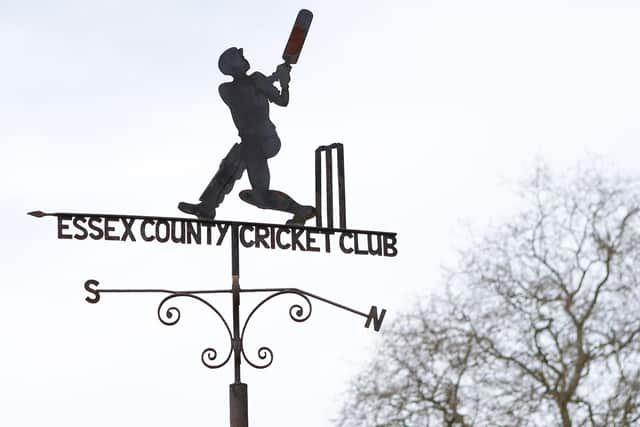Essex racism report as bad as Yorkshire’s, so where’s the mass outcry? - Chris Waters comment
I must have missed those who called for the book to be thrown at Yorkshire now calling for Essex to be similarly punished.
In short, I must have been walking around with my eyes and ears closed.
Advertisement
Hide AdAdvertisement
Hide AdAnd yet the report into racism at Essex, published last Friday, is easily as bad as the one into Yorkshire.


The language, I would say, is just as shocking, and there is a lot more of it, too.
But I haven’t seen politicians rush to judgement. I haven’t seen them pile on to social media in the way that they did when – quite erroneously as it turned out – it was reported that Yorkshire had dismissed the P-word as “banter”.
Indeed, as this newspaper was able to reveal last summer, it was the investigation/panel that made that egregious equivalence – not the club.
Advertisement
Hide AdAdvertisement
Hide AdBut even that ineptitude should not mask the fact that the report also expressly stated that the P-word is unacceptable in any circumstances, a necessary clarification.


There are, of course, obvious differences between the two cases.
Yorkshire were the first in the spotlight – and therefore the most newsworthy.
They are, with all due respect to Essex, a bigger club and a Test-hosting county. Historically, there was a feeling that Yorkshire had a hostile attitude towards outsiders, with overseas players not permitted until 1992, or were at least overly concerned with championing “their own”. Yorkshire were ripe for such a scandal in theory, as well as in practice.
Advertisement
Hide AdAdvertisement
Hide AdThey took the hit for a game-wide and indeed societal problem: that of language for too long deemed acceptable that is clearly unacceptable – notwithstanding the inherent dangers of taking anything out of context from a different time period and applying it to the standards of the present, the road to hysteria.
The distinction between what is, and is not, racist language, however, is not difficult to grasp.
That should surely be as obvious now as it was 20 years ago.
To read the Essex report, which related, as primarily did Yorkshire’s, to historic racism, was depressing.
Advertisement
Hide AdAdvertisement
Hide AdBut when Anu Mohindru, the Essex chair, said that “there have been some fundamental errors in the past, which don’t reflect the Essex of today”, I thought how well that applied in the Yorkshire case too, had people actually taken a moment to listen and really dig into the matter before racing to condemn.
So, where is the DCMS select committee hearing into what happened at Essex?
Where is Julian Knight MP – or his current equivalent – looking down in judgement?
Why aren’t people being sacked left, right and centre at Chelmsford – clearly there is some crossover in the playing/coaching/backroom staff in the time period to which the allegations refer, whereas Yorkshire’s lot were ousted for disputing an account.
Advertisement
Hide AdAdvertisement
Hide AdAnd where are those journalists who stuck the knife into Yorkshire on the basis that the club was rotten, its culture poisonous, with their blades now ready to slice the flesh of Essex? They are not exactly foaming at the mouth.
Perhaps we are just numb to it all, fatigued by the most depressing crisis to have hit the sport.
Perhaps, too, people have come to realise that there was more to the Yorkshire case than met the eye, that perhaps there are, in fact, two sides not to racism but certainly to every story.
One thing that must be clear to anyone of average intelligence is that Yorkshire and Essex cannot be the only clubs who have had issues, or are the other 16 first-class counties squeaky clean? On the balance of probabilities, we can confidently assert – “you must be kidding”.
Advertisement
Hide AdAdvertisement
Hide AdThe biggest difference between the Yorkshire and Essex cases might simply have been in their respective handling; whereas Yorkshire’s was so badly done that it would take an entire week to go through the various mis-steps, from general obfuscation to ill-judged apologies/phrases such as “inappropriate behaviour”, at least Essex’s proceeded in smoother style, albeit still dragged on for just as long, if not longer.
There was less vitriol on social media, certainly, and the complainants did not have the same legal and public relations heft behind them either. The cases were the same in certain ways but also very different.
So, what now for Essex in terms of punishment?
Surely, at a minimum, they should receive the same as Yorkshire: points penalties and a fine?
It will be the first big test for the new Cricket Regulator, which will no doubt refer the club/individuals to the Cricket Discipline Commission (CDC).
The game will be watching – but not necessarily as closely as it was when Yorkshire were in the eye of the storm.